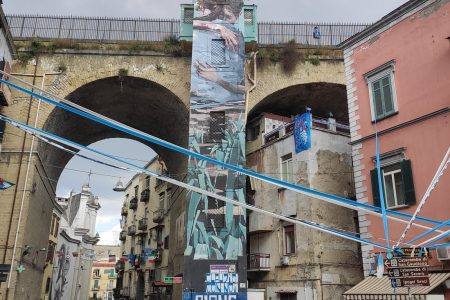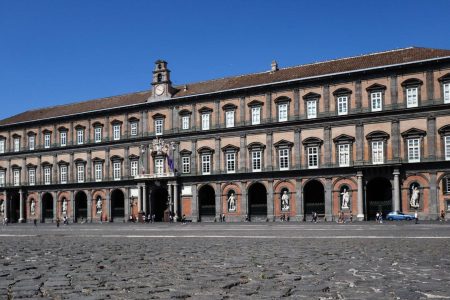Table of Contents
Italian literature was born thanks to the contributions of illustrious figures of the 12th century. Among these Francis Petrarch, who was a poet, philosopher, but above all one of the greatest writers of his time, a pioneer of Humanism and the rediscovery of the great Latin and Greek classics.
Among his travel, aimed at achieving the deepest and most varied culture, Petrarch did not fail to travel to Naples to visit the places described by the poet Virgil. The writer came twice to the Neapolitan city, and his accounts of the love and hatred he felt for the fascinating Naples, as imperfect as it is rich in history, are numerous and conflicting.
Petrarch visited many Italian cities, making himself known for his profound erudition. He was offered thepoetic coronation Paris and Rome. Thus, on the advice of Cardinal Giovanni Colonna, he agreed to receive the honor in the capital. Petrarch was crowned Supreme Poet at the Campidoglio in 1341.
Petrarch in Naples before poetic coronation
Shortly before his poetic coronation, Petrarch was invited to Naples to the court of King Robert of Anjou, called the Wise, probably among the regal halls of the Angevin Male. Indeed, the ruler had to examine the young man of letters before awarding him the laurel wreath, a symbol of the poetic degree “ad honoris". The poet was fascinated by the grandeur of the Angevin court, and his name and fame were strengthened by the sovereign's approval.
A Naples Petrarch met the most important Neapolitan literati of the time, such as Barbato da Sulmona, Giovanni Barilli and Nicolò Alunno d'Alife. He returned to the city two years later, in the summer of 1343 at the behest of Pope Clement VI. Housed in the palace of the Colonna princes of Stigliano, Petrarch stayed in the city for a full three months. King Robert of Anjou had died, and the teenager reigned on the throne. Giovanna Durazzo. The Angevin period was now over, and great was the discontent with the succession: the queen, in fact, was the niece of King Wise, as well as his only descendant. Her reign was marked by disorder and countless court intrigues.
When Petrarch returned to Naples, therefore, he found an entirely different situation from that of his first trip. To be fair, the author came to the city to ask the young queen for the release of some political prisoners, accused of rebellion and locked up in the prisons of New Castle. The outcome of the request, however, was negative, and great bitterness pervaded Petrarch, who began to harbor a mixture of mixed feelings toward Naples as well.
Disappointed he began to notice disorder and injustice even among the streets. He was struck in particular by an event he personally witnessed: near the Church of St. Catherine in Formello, in fact, the writer witnessed a fight between two men that resulted in a shocking cold-blooded murder of the young unfortunate man.
On the one hand, the historical and social events of the city frightened and disappointed him; on the other hand, Petrarch could not resist the scenic and cultural charms of Naples. He frequented the city's landmarks by going to the Angevin Male and visiting the many cloisters and gardens. The supreme scholar also continued his cultural research at the rich libraries and fascinating archaeological sites of Naples. As witnessed in the work Seniles, the scholar followed in Virgil's footsteps among those places in Naples that the ancient author mentioned in his great works.
Amazed by the great beauty of the Bay of Naples, he made multiple explorations in the company of his Neapolitan friends, Barilli and Barbato. These adventures include a hike in the area of the Phlegraean Fields where he could visit the wonders of Bay and of Pozzuoli, going as far as Miseno and Cuma. He also visited the Lake Avernus, enraptured and intrigued by myths and stories about the ancient "entrance to the underworld," and that of Lucrino, exploring, finally, the esoteric Sybil's Cavern.
You might be interested
Walking tour among the wonders of the Sanità district
per person Book
Walking tour in the Spanish Quarters to breathe in the magic of Naples
per person Book
Private guided tour of the Royal Palace of Naples
per person Book
The tsunami that struck Naples in 1343
In 1343 a frightening and terrible meteorological event struck the city of Naples. Petrarch himself is said to have noted between his lines the storms that struck the city in those days. On the night of November 24 of that year, a terrible tidal wave occurred. The earth shook amidst roars and the high splashes of the stormy sea while huge waves hit the boats in the harbor, damaging everything and even engulfing the lighthouse. The flooded streets became a dangerous place, so the people rushed to the highest points of the city. Sewers burst and many were killed by the devastating natural event. Francesco Petrarch, who was still in Naples, was traumatized and horrified by the fury of the tsunami, so he first took shelter in the spaces of the Church of St. Lawrence, where the friars took him and other wounded fellow citizens in. Meanwhile, the sea continued its work of destruction until the next day. Petrarch then jumped into a carriage and fled away to Gaeta where he took the first available ship that would take him to Livorno and then to Parma. In short, his already terrible opinion was blackened by this fortuitous event that shook him deeply and of which he recounts among his epistles Familiares.
Biographical notes on Francesco Petrarca
Francesco Petrarca was born in Arezzo, Tuscany, in 1304. Both his parents were originally from the city of Florence, but with the arrival of Charles of Valois who exiled all the White Guelphs from the city, Ser Petrarch and his family were forced to move elsewhere. Young Petrarch's early years thus took place between Italy and France where his father, a notary in the papal court, worked. At that historical period Avignon had become the new seat of the Church of Rome; in fact, in Italy he made important friendships, as is evidenced in Petrarch's own work, Familiares XXI.
In the epistle addressed to his friend Boccaccio, the author tells of his meeting with the Supreme Poet Dante Alighieri. During his cultural journey he became acquainted with French novels and Dante's literature and also devoted himself to religious texts. In 1320 the young man attended theUniversity of Bologna where he studied law, rediscovering ancient authors including Horace and Virgil, whom he drew inspiration from in his poetic compositions, while shaping prose works following the style of Seneca and Cicero.
A few years later, in 1327, he saw Laura. They met during one of his stays in Avignon and, as the author himself describes, it was love at first sight. The deep feeling for this already married French noblewoman inspired most of Petrarch's poems in his major work: the Songbook. However, he lived as a lay cleric, taking vows and befriending the Colonna family.
In the last years of his life, Petrarch had fled away from Neapolitan life, taking shelter in Parma and then Valchiusa. In 1348 he arrived in Italy the Black Plague and with it the dramatic news of the death of his beloved Laura, stricken by the disease. Despite the sad news Petrarch continued to travel, living for two years in Provence and then returning to Italy, to Milan. He then went to Padua and Venice, finally returning to Arquà in 1370 where he died suddenly four years later.
Legend of Petrarch's death and the mystery of his Tomb
It is reported that the death surprised the great Petrarch on the night of July 19, 1374. He was sitting at his desk in the canonical house assigned to him in Padua, when, studying Virgil's texts in an effort to further perfect his literary art, he was struck by a syncope from which he never again awoke. His remains were apparently buried near the parish church St. Mary of the Assumption by Arquà. However, even after his death, Petrarch continued to travel. Six years after burial, his remains were exhumed and moved to a sarcophagus. At the behest of his son-in-law, in fact, a monument sepulchral in red Verona marble, similar to ancient Roman sarcophagi. On it is an inscription, apparently composed by Petrarch himself before he died, which reads as follows: "This stone covers the cold bones of Francesco Petrarca, welcome O Virgin Mother, his Soul and you, son of the Virgin, forgive. May it weary of earth, rest in the heavenly rock."
Because of these moves, however, the bones contained in the monument were analyzed in 2004. The examinations testified that the skull in the tomb did not belong to Petrarch but to an unknown woman who probably lived in the 1200s. A mystery shrouds the affair, and one still wonders who, among the many who desecrated Petrarch's tomb, took away the skull of the




0 Comments